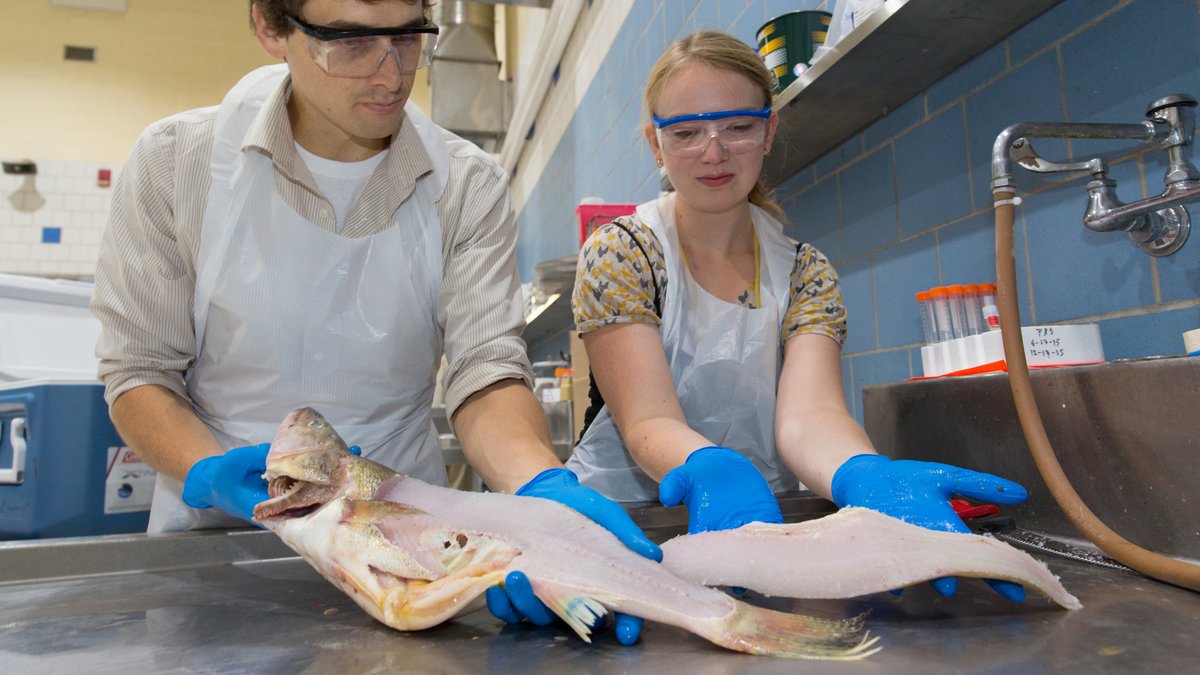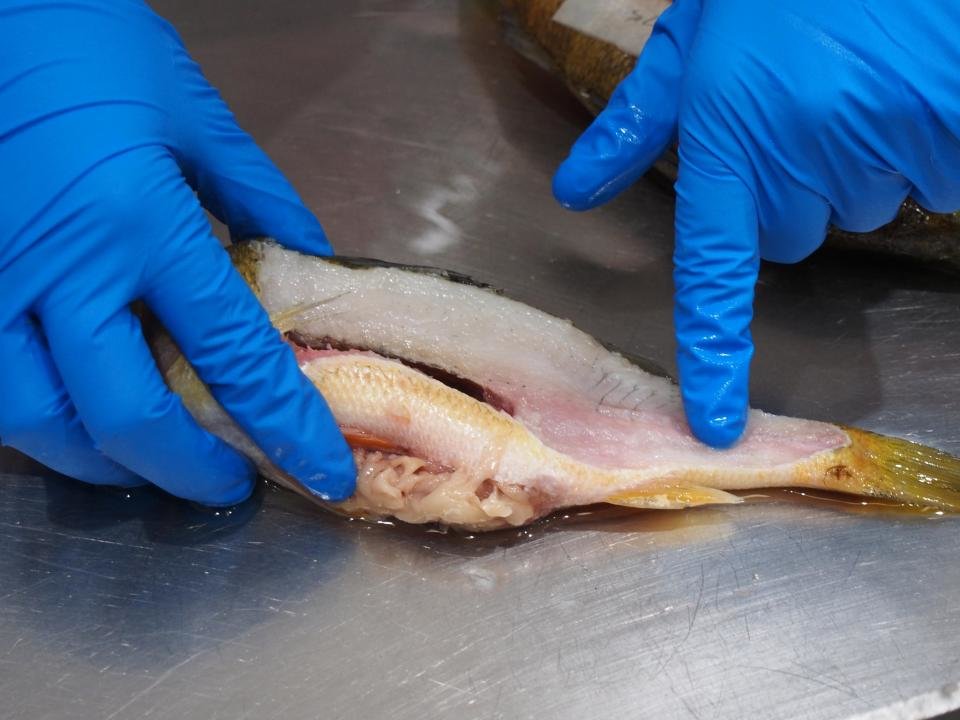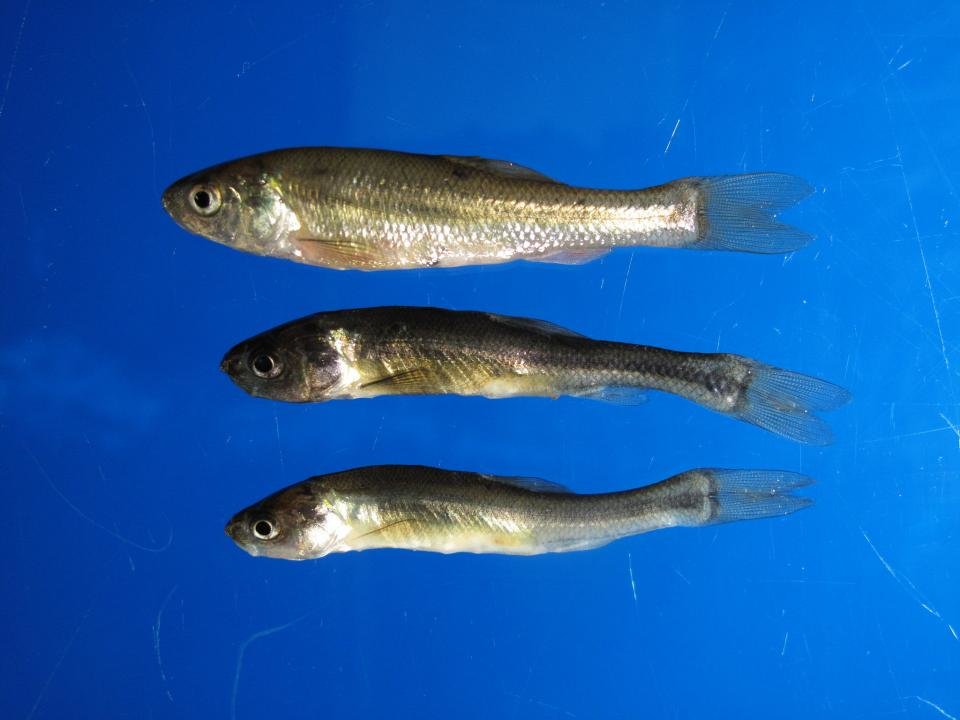Heterosporis sutherlanda
Heterosporis, which is caused by the microsporidian parasite Heterosporis sutherlanda, is known to affect 15 species of freshwater fish, including walleye and yellow perch. The small, microscopic spores of this parasite live inside of the muscle cells of their fish host and liquefy the muscle tissue. It can spread by moving through infected fish or contaminated water. MAISRC researchers are working to better understand this disease so they can inform science-based management decisions. More about Heterosporis.
MAISRC findings
- Formally named and described the appearance, genetics, and pathology of Heterosporis sutherlandae, the causative agent of Heterosporosis
- Validated a highly sensitive and specific molecular diagnostic assay
- Developed an infection model to understand the disease over time in live fish
- Conducted surveys of Minnesota fish populations to estimate current distribution and species affected and identify long-term and seasonal infection variability
- Despite early outbreaks from 2000 to 2005, found that Heterosporosisis is now relatively rare in Minnesota among species, seasons, and lakes investigated
- Created a population model that determined Heterosporis may have short-term impacts on yellow perch harvest, but long-term impacts are unlikely
Research
Determining Heterosporis threats to inform prevention, management, and control
Twenty-eight percent of the 400 yellow perch sampled were infected with Heterosporis. Males were 1.5 times more likely to be infected than females and were more severely infected. The presence of the parasite did not vary with relative weight or age, but infection severity was highest among older individuals that were in better condition. These results suggest that males are more susceptible to infection, and that infection is not associated with maturity or a gape-limiting food source. These results also suggest that Heterosporosis increases in severity with time or by increased exposure.
Led by Dr. Paul Venturelli
About Heterosporis
Description
Heterosporosis is caused by the parasite Heterosporis sutherlandae. This disease was first reported in 1990 in Leech Lake (Cass County, MN) and Catfish Lake (Vilas County, WI). Heterosporis was recently identified as a priority species by the Minnesota Aquatic Invasive Species Research Center and a pathogen of concern by the Great Lakes Fish Health Committee. Because the parasite essentially liquefies muscle tissue, infected muscle has a freezer-burned or cooked appearance and is soft when touched. In severe infections, the fish will appear to curve inward due to muscle loss. The disease is most often observed once the fish has been filleted.
Life cycle
The small, microscopic spores of this parasite live inside of the muscle cells of their fish host. The parasite replicates, matures, and ultimately ruptures the cell and liquefies the muscle. The parasite is transmitted from one fish to another through the consumption of free-floating spores or an infected fish. Unlike many other parasites of fish, no intermediate hosts are needed to complete the life cycle.
Impacts
Heterosporis sutherlandae is known to infect 15 species of freshwater fish, including ecologically and economically important species such as walleye, yellow perch, and fathead minnows. Humans and other animals are not known to be susceptible; however, it is advised to remove infected pieces of the fillet and cook thoroughly prior to consumption.
Distribution
The disease was first confirmed in 1990 and has since been reported in 26 lakes in Minnesota, 16 lakes in Wisconsin, two lakes in Michigan, and one lake in Ontario. The origins of Heterosporis sutherlandae are unknown; however, related species are found in marine fish of the West Pacific and Arabian Sea. See a list of Heterosporis-positive waterbodies in Minnesota since 2011.
How it spreads
Heterosporosis can spread by moving through infected fish or contaminated water. You can do your part to prevent the spread of this disease by cleaning your boat and equipment between lakes, not releasing bait or aquarium fish into new areas, draining the water from your boat, and not disposing of infected fish carcasses in our waterbodies.



